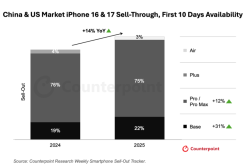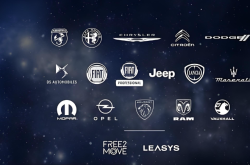Survey | Fourth Installment of AI Smart Lock User Insights: Unveiling Users' Preferred AI Features
![]() 07/09 2025
07/09 2025
![]() 525
525
With the profound integration of AI technology into smart homes, AI smart locks have transcended their role as mere unlocking tools. The versatility and practicality of their functions now stand at the forefront of users' concerns. Among the myriad of AI smart lock features, which ones captivate users the most? Today, we present the fourth installment of our AI smart lock user insights, delving into users' preferences for AI smart lock functionalities and interpreting the core direction of consumer demand within the industry. The survey reveals significant differences in users' priorities regarding the various functions of AI smart locks. Notably, AI security features top the list with the highest proportion of users expressing "very interested," emerging as the core focus for users. Closely following are AI unlocking features, which also garner substantial attention. Additionally, user interest in AI batteries stands out among other functions. It's noteworthy that existing and potential users of AI smart locks exhibit distinct preferences, reflecting the diverse needs of users at different stages. Let's delve deeper into this analysis.
AI Security Features
Users widely acknowledge the proactive security role played by AI in smart lock scenarios. From a holistic perspective, "door lock camera image analysis, automatic identification of security risks," and "door lock pushing early warnings for external security risks while sounding an alarm to deter intruders" are the most popular security features, with 59% of users indicating "very interested." The feature "accurate video slicing of door lock recorded images and pushing early warnings" accounts for 57% interest. Existing users show significantly higher interest in AI security functions, leading comprehensively in the "very interested" category, especially in terms of "sounding an alarm to deter intruders," with a "very interested" ratio of 62%, surpassing potential users. This underscores that after practical use, existing users have a strong sense of anticipation and security identity regarding AI smart locks' ability to proactively address potential threats. At the "very interested" level, potential users generally lag behind the existing user group, with a relatively higher proportion at the "relatively interested" level, such as a "relatively interested" ratio of 32% for "recording video slices and pushing early warnings."
Consumer Interest in AI Security Features
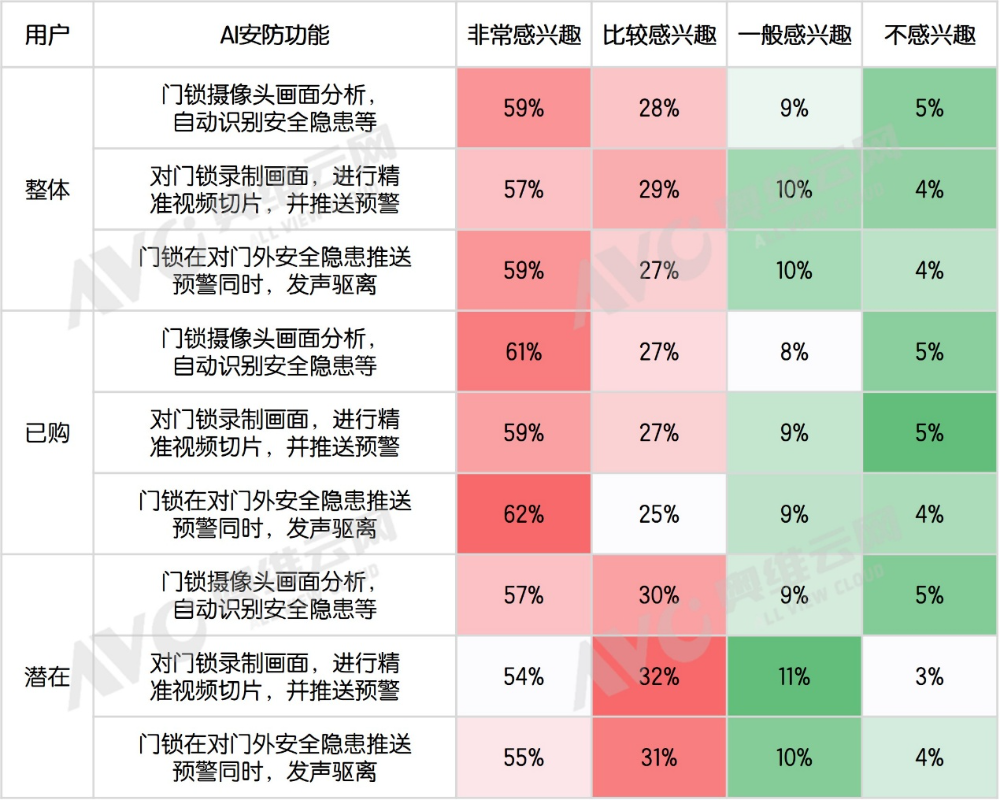 Data Source: "AI Smart Lock White Paper in the Eyes of Users"
Data Source: "AI Smart Lock White Paper in the Eyes of Users"
AI Unlock Features
Overall, 54% of users are "very interested" in "AI fingerprint" and "AI face recognition" functions, ranking them first among AI unlocking features. The interest in "AI vein recognition" stands slightly lower at 46%. This indicates that users have a higher acceptance of AI enhancements for fingerprint and facial biometric methods. Existing users generally exhibit a higher level of interest in AI unlocking features compared to potential users, particularly with "very interested" ratios of 56% for "AI face" and 55% for "AI fingerprint." This disparity suggests that potential users are still in the observation and evaluation phase regarding product functionalities, with their interest primarily driven by external information rather than hands-on experience. Among potential users, in the "relatively interested" dimension, "AI fingerprint" stands at 35%, and "AI vein" at 36%.
Consumer Interest in AI Unlock Features
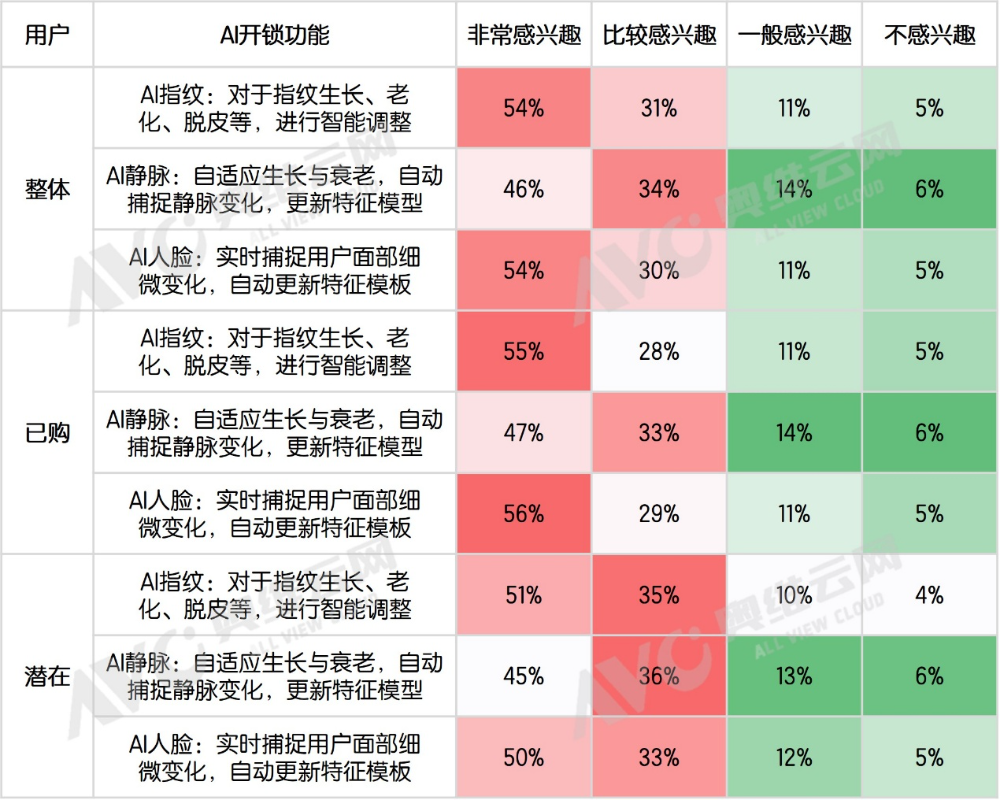 Data Source: "AI Smart Lock White Paper in the Eyes of Users"
Data Source: "AI Smart Lock White Paper in the Eyes of Users"
AI Butler Features
Among all users, the proportions of "very interested" in "early warning" and "sending and receiving express deliveries" rank at the forefront, with users tending to prioritize functions related to convenience and security. "AI response" and "whole-house interconnection functions" also hold a certain degree of appeal. Relatively, the "encyclopedia Q&A function" has the weakest attraction, with only 29% of users indicating "very interested" and a "not interested" ratio of 14%, indicating low user acceptance for this type of general knowledge interactive feature. Among existing users, "sending and receiving express deliveries" and "early warning" remain the most popular functions, and they have stronger trust in the extended service capabilities of smart locks. However, existing users show relatively weaker interest in functions like "reminder and care" and "encyclopedia Q&A," which have yet to demonstrate practical value in users' minds. Potential users have a higher proportion of "relatively interested" in "reminder and care" and "AI response" dimensions, suggesting that they anticipate AI smart locks to undertake more family information and service management tasks while being more tolerant of the "encyclopedia Q&A" function.
Consumer Interest in AI Butler Features
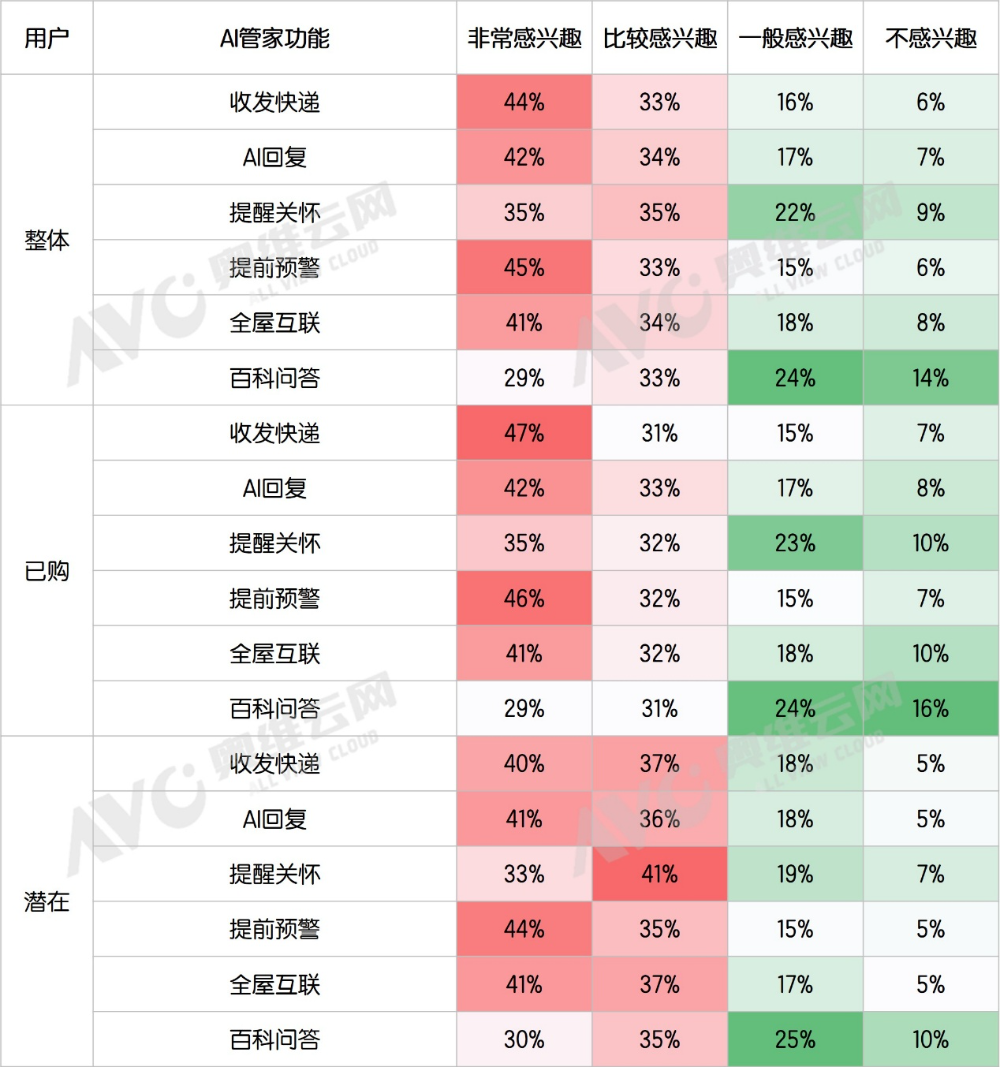 Data Source: "AI Smart Lock White Paper in the Eyes of Users"
Data Source: "AI Smart Lock White Paper in the Eyes of Users"
Other AI Features
Among all users, the proportion of "very interested" in "AI battery" reaches 51%, significantly higher than that of the virtual butler. This underscores users' strong rigid demand for AI intelligent management functions that can efficiently utilize battery power based on the surrounding environment and usage behavior. The smart prediction, power optimization, and early warning capabilities of "AI battery" offer clear value. In contrast, the appeal of the "virtual butler" is relatively weak, with only 30% of users expressing "very interested." There is no widespread consensus on the "virtual butler with a screen added to the outdoor unit" of smart locks, and user cognitive foundation and acceptance still need enhancement.
Consumer Interest in Other AI Features
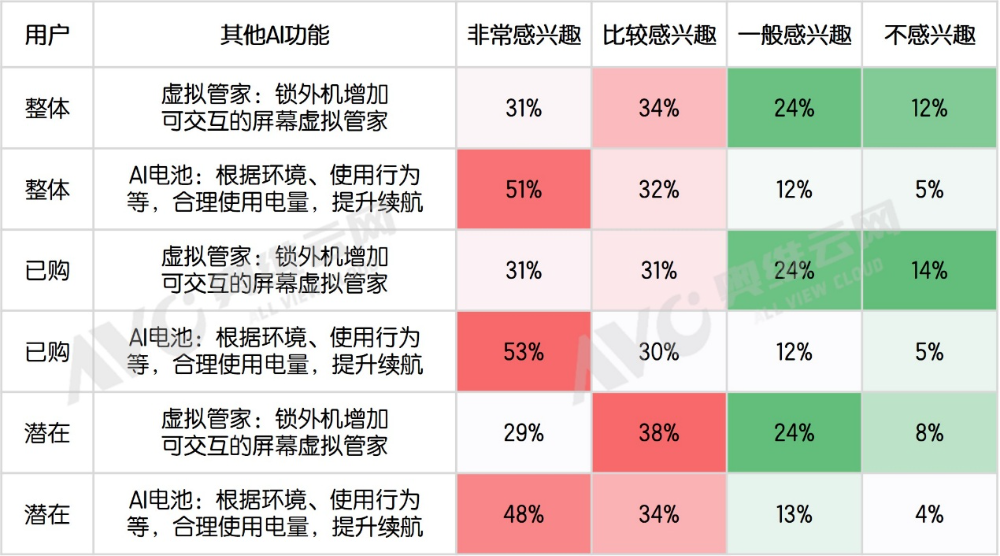 Data Source: "AI Smart Lock White Paper in the Eyes of Users"
Data Source: "AI Smart Lock White Paper in the Eyes of Users"
Based on the above insights, when developing AI smart locks, brands must prioritize enhancing the core experience of security and unlocking while optimizing battery technology to alleviate battery life concerns. This series of AI smart lock user insights has comprehensively analyzed user preferences from premium acceptance, user group characteristics, information acquisition channels, to functional preferences. Moving forward, as AI technology further penetrates, exploring more functional innovations that align with segmented family scenarios, while ensuring safety and convenience, will be crucial for driving market growth. AVC Revo will continue to track industry trends and shifts in user needs, providing valuable references for industry development.


